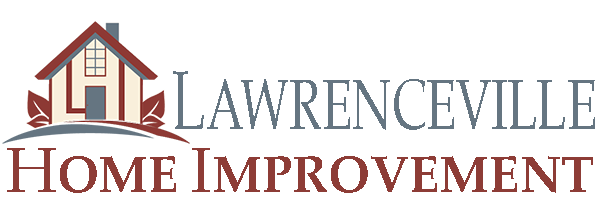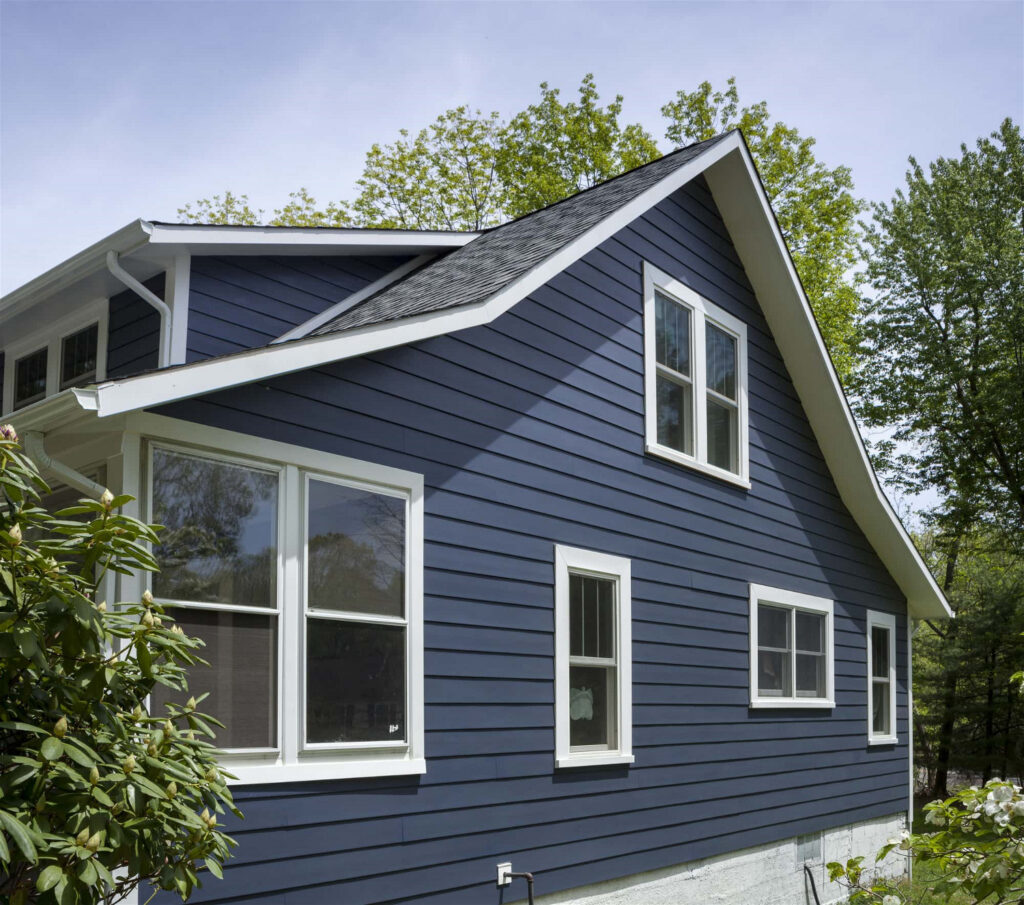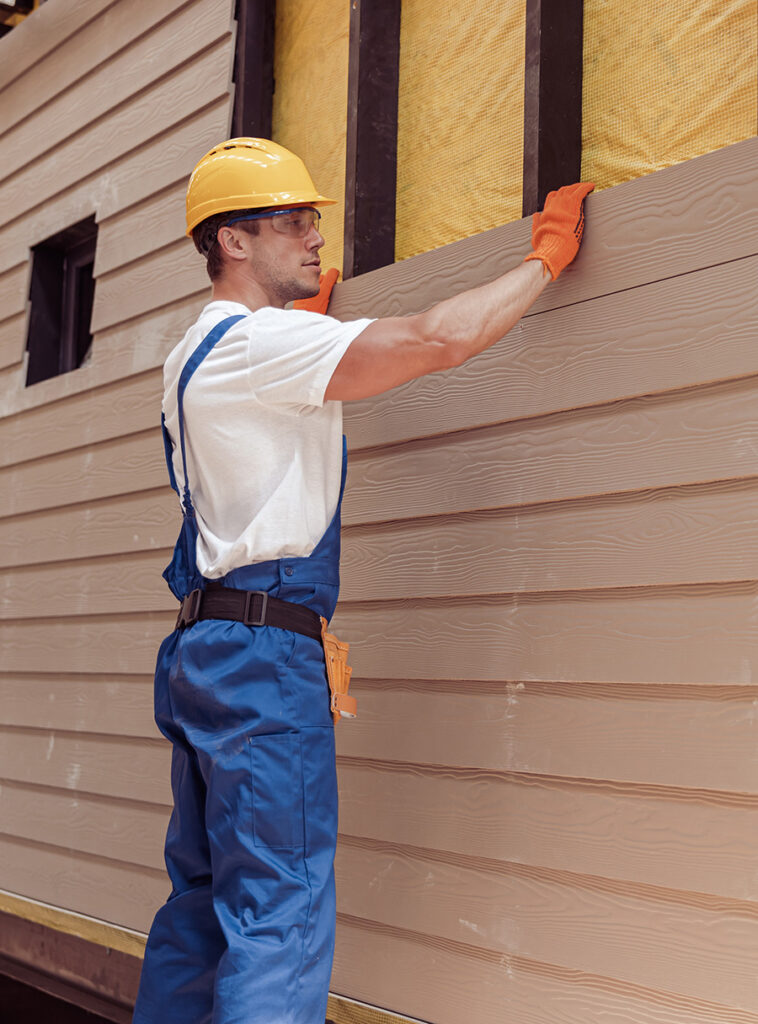Types of Home Siding Materials
The first step on your journey to siding replacement is to decide which type of siding look you want to pursue. All of our siding materials comes in a broad range of styles and colors.
Few would disagree that wood siding is one of the most attractive of home siding options. Common types of wood siding include wood planks, boards or panels, and shingles. Wood clapboard lap siding is one of the oldest types of house siding, and you can see its beauty in many historic homes. The main drawbacks of wood siding are its high cost and relatively high maintenance needs. Wood siding is available in a wide variety of styles, textures, and finishes. Board siding also comes in a plywood version, often called T1-11, which is simply exterior plywood with various face treatments and groove patterns to emulate a traditional board-and-batten design.
Wood requires an exterior finish, such as paint or stain. It can be damaged by sun exposure, rot, and insects; it is subject to warping and splitting. Wood siding runs from moderate to very high in cost. Painted finishes tend to require higher maintenance and require good exterior house painting preparation. Wood siding is prone to paint problems due to moisture if the home is not properly ventilated. Stained finishes usually require somewhat less maintenance than paint.
The high-maintenance needs associated with wood siding brought a desire for an alternative. Aluminum siding was the first to fit the bill and it has evolved over the years into a very low-maintenance and popular siding choice for newer homes.
Metal siding typically includes a factory-applied finish for maximum corrosion resistance. Plain, unfinished panels are usually galvanized for corrosion protection.
Metal is commonly used as “retrofit” siding and it is sometimes applied directly over wood siding when the desire for low maintenance wins out over aesthetics or when the wood siding has been severely damaged. Metal is a durable material tend to be more color-fast than wood.
Metal is now available with some special plastic or vinyl coatings for additional resistance to fading and weathering, but is more expensive. Aluminum and steel are prone to denting and can be noisy. Steel and aluminum are low-maintenance siding materials. Standard pre-painted aluminum siding may be prone to chalking. Denting is a common problem with aluminum or steel siding.
As the search for low-cost, low-maintenance siding continued, the next evolution after aluminum and steel siding was the advent of vinyl siding. Like aluminum, vinyl siding comes in strips with interlocking edges. Unlike metal siding, vinyl siding is available in a variety of textures, including wood shake/shingle style. Commonly used as a retrofit siding, vinyl can be applied over old wood siding. Vinyl can be prone to cracking in cold weather if subjected to impact. Vinyl is a very low-maintenance siding material—it never needs painting, as the color is solid through the material.
As the search for low-cost, low-maintenance siding continued, the next evolution after aluminum and steel siding was the advent of vinyl siding. Like aluminum, vinyl siding comes in strips with interlocking edges. Unlike metal siding, vinyl siding is available in a variety of textures, including wood shake/shingle style. Commonly used as a retrofit siding, vinyl can be applied over old wood siding. Vinyl can be prone to cracking in cold weather if subjected to impact. Vinyl is a very low-maintenance siding material—it never needs painting, as the color is solid through the material.
Color may be the most important aesthetic consideration once a panel size and texture is decided upon. There is a wide spectrum of colors available including bold colors like midnight blue and forest or soft neutrals like heritage cream and herringbone. Grays have been particularly popular in recent years ranging from slate (gray with a touch of blue) to castle stone (gray with a touch of tan) to sterling gray (a very soft and light gray). When finalizing color choices, you should always look at your house as a whole; consider your front door color, shutter color, and even any stonework on the walls or entry staircases/porches.
If you are struggling with your color option, Lawrenceville Home Improvement can help you use software to better envision what the final product will look like. This can really help to pull your final decision together especially when you are overwhelmed with all the options available.









